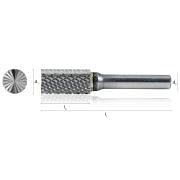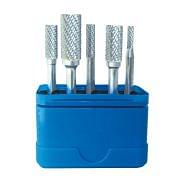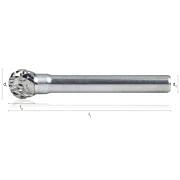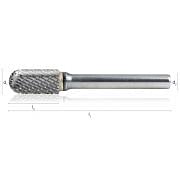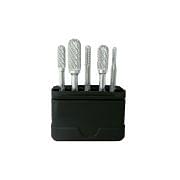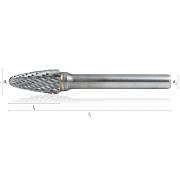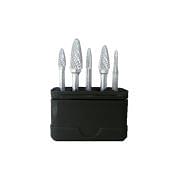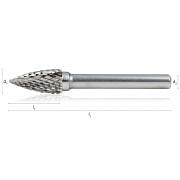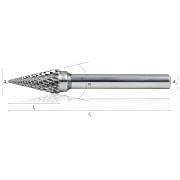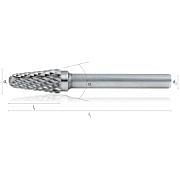Solid carbide rotary cutters
Carbide rotary cutters are essential tools in modern machine shops, used for machining hard and tough materials. These tools are ideal for milling, shaping and finishing operations on a wide range of materials, including alloy steels, stainless steels and cast irons. Tungsten carbide rotary cutters are characterised by their durability and ability to maintain sharpness even after prolonged use, making them a valuable investment for any machine shop.
Advantages of Tungsten Carbide Rotary Cutters
- Wear resistance: Due to their tungsten carbide composition, tungsten carbide rotary cutters offer superior wear resistance compared to high-speed steel (HSS) cutters. This means they can be used for longer without losing sharpness, reducing machine downtime and tool replacement costs.
- Machining efficiency: Tungsten carbide rotary cutters allow fast and precise material removal, improving the efficiency of the production process. They are particularly effective when machining hard, tough materials where other tools might fail.
- Versatility: Available in a wide range of shapes and sizes, these cutters can be used for a variety of operations, such as creating complex profiles, finishing irregular surfaces and preparing welds. This versatility makes them an indispensable tool in any machine shop.
Features of Rotary Cutters in Hard Metal
- Material: Made of tungsten carbide, a material known for its hardness and heat resistance. This allows the cutters to maintain high performance even under extreme machining conditions.
- Blade design: Tungsten carbide rotary cutters feature sharp, precise blades designed to minimise vibration during use, improving surface finish quality and reducing operator fatigue.
- Advanced coatings: Many rotary cutters feature titanium nitride (TiN) coatings or other advanced materials, which further increase wear resistance and prolong tool life.
- Availability of variants: There are several variants of rotary tungsten carbide cutters, such as single-cut, double-cut, flamed, cylindrical and conical. Each variant is designed for specific applications, allowing optimal customisation of the machining process.
Carbide rotary cutters are used in numerous industries, including aerospace, automotive and precision engineering. They are indispensable for finishing and shaping operations where high precision and a high-quality surface finish are required. In particular, they are used for removing burrs, preparing surfaces for welding and creating complex shapes on metal components.
Carbide rotary cutters are an excellent choice for machine shops looking to improve the quality and efficiency of their machining operations. With their durability, precision and versatility, these cutters offer exceptional value and are an investment that quickly pays for itself.

